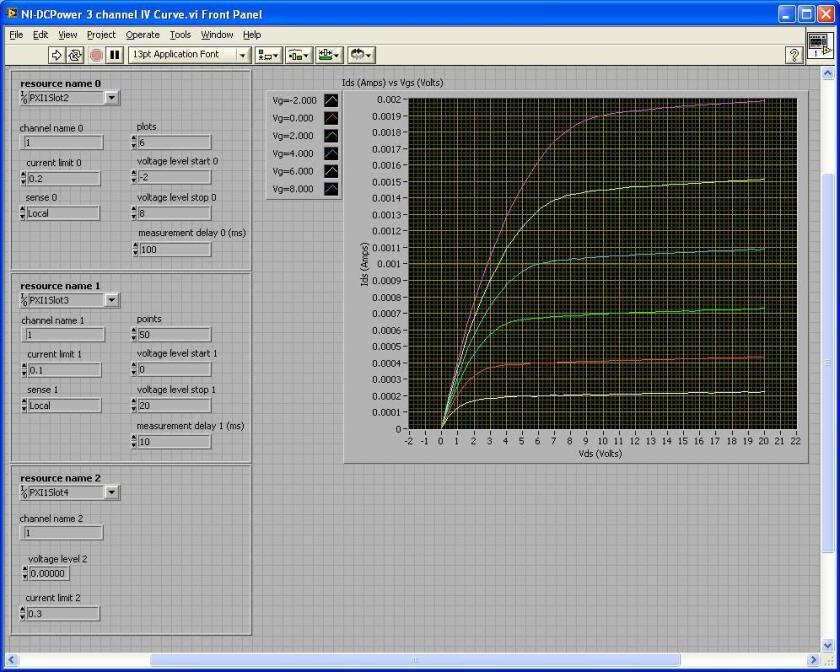NI Parameter Analyzer

National Instruments Parameter Analyzer | Contact Information |
| Model No.: PXI-1033 | Faculty Contact: Aaron Hawkins |
| Staff Contact: Jim Fraser | |
| Maintenance Request |
PCI eXtensions for Instrumentation (PXI) is a PC-based platform that offers a high-performance solution for measurement and automation systems. It will be referred to as parameter analyzer here. The parameter analyzer has mechanical, electrical, and software features that define complete systems for test and measurement, data acquisition, and manufacturing applications. It is controlled from the computer using the "LabVIEW" program. LabVIEW is a graphical programming environment used for measurement, test, and control systems. Use of the parameter analyzer is limited by the LabVIEW software. Currently the primary use for this parameter analyzer is to measure and analyze transistors on wafers, but with more software it could also be used for other applications. The instructions below are the procedure for analyzing a transistor on a wafer.
1. Turn on Parameter Analyzer using the switch on the front.

2. Put the wafer on the probe station chuck and vacuum it down. (More info on steps 2-5 is available on the probe station's page) 3. Turn on the Sony TV and Panasonic Desktop Editor. (To see through the microscope) 4. Move the station's probes into their appropriate positions on the wafer. 5. Connect the appropriate wires from the analyzer to the probe station, and make sure the probes are connected to the correct color-coded jack. 6. Open the LabVIEW program on the computer next to the probe station by clicking on the desktop folder called "NI PXI-4130..." and then "NI-DCPower
3. channel IV Curve." Picture of LabVIEW program

4. Adjust program settings as needed such as voltages, currents, and number of plots and points.
5. Click "Run" in the program. A "Run Continuously" option is also available.
6. A graph similar to the one in the picture of the LabVIEW program above should result. If not then go back and check your probes and wire connections.